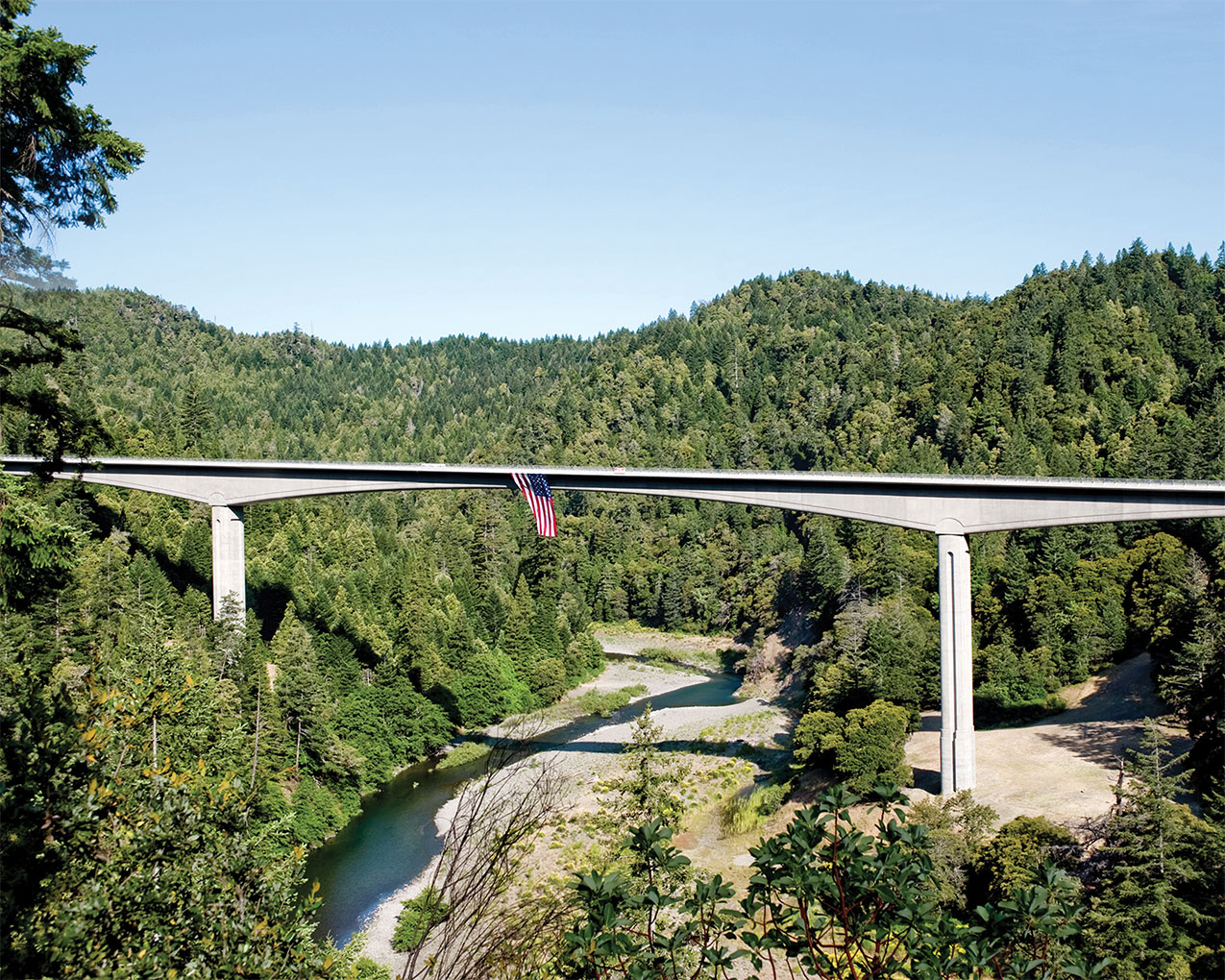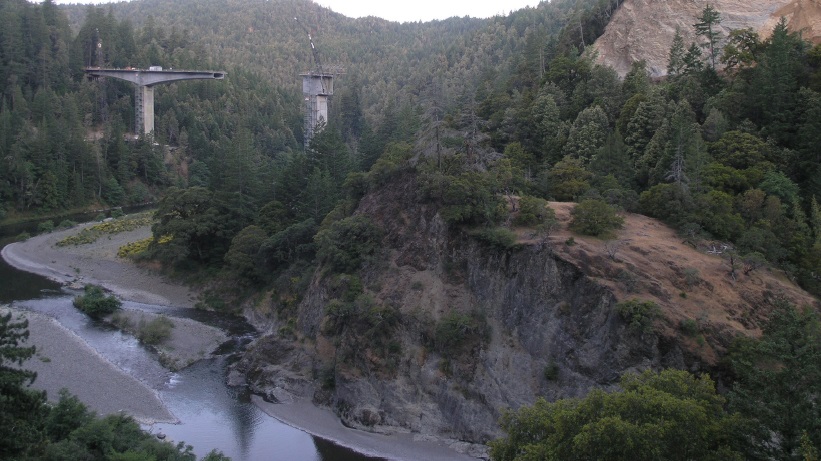Confusion Hill-South Fork Eel River Bridge – Northern Mendocino County, California
The Confusion Hill bridge project relocates approximately 1.5 miles of Route 101, to the west via two bridges that span the South Fork Eel River, in order to alleviate a recurring problem of landslides and slipouts around Confusion Hill on Route 101. A large, ancient rock slide complex extends from the South Fork Eel River to more than 1,000 feet above, enveloping the current highway located 140 feet above the river. This slide activity has caused numerous road closures and delays associated with one‐way traffic control situations. Geotechnical studies of the site concluded that the ancient slide is progressively losing strength with a high probability that the slides within the complex will continue to move in the future. The current road had to endure numerous closures during the winter of 2005 and 2006 because of continued slide activity.
The new south bridge is a variable-depth, cast-in-place segmental box girder structure with spans of 106 m, 174 m, and 133 m and a deck width of 13 m. The superstructure was built using balanced cantilever construction from the two interior piers and construction on falsework at the abutments.
Innovation of Design and/or Construction
The single pier-column utilizes multiple, confined concrete cores provide the necessary resistance for both cantilever segmental construction as well as the seismic design forces. An integral superstructure connection completes the seismic resistance system. The superstructure design combines a traditional internal post-tensioning system with additional mild steel reinforcement used to provide additional strength and ductility during a seismic event. An integral superstructure connection completes the seismic resistance system.
The bridge has a seismic monitoring system consisting of strong motion sensors placed at strategic locations along the interior of the box girder as well as at all supports and a free field site to capture real time displacements and mode shapes of the structure during a seismic event. The sensor layout provides 24 channels of data and is all recorded on the same clock to capture pertinent mode shapes. Information from the data recorders is transmitted immediately to DOT personnel by phone line. The sensors will provide relative footing/superstructure movements that can be used to immediately determine if the bridge is safe for the traveling public. Comparing recorded mode shapes along with the amplitudes of motions will help further the knowledge of how structures react to earthquakes and how to better model these types of structures in the future for violent ground shaking.
Rapid Construction
The total construction time of this bridge was 30 months and was completed nearly three months ahead of schedule. The successful completion of this challenging project was the result of well planned, coordinated efforts within the construction team as well as the open, working relationship between the designer, construction engineer and contractor.
Aesthetics and/or Harmony with the Environment
The South Fork Eel River Bridge project presented many challenges in balancing aesthetics, constructability, environmental issues and design efficiency. The cast-in-place segmental concrete bridge provides an efficient, cost effective long span structure that meets the critical environmental issues of minimizing the impact to the river basin below.
To enhance the bridge’s visual impact, several aesthetic reveals and a rounded web to bottom soffit interface were incorporated. A concrete see-through barrier with tubular steel bicycle railing provides travelers with a view of the scenic river valley. These features combine a well proportioned box girder with subtle detailing that highlights the geometry of the structure and provides an impressive visual impact.
Jury Comments
This project incorporates innovations in design and construction in meeting the desires of the community, enhancing the environment, assuring sustainability, quality, and economy. The high level of cooperation between the owner, builder and contractor resulted in this significant construction achievement. This project exceeded expectations under very demanding requirements.
2009 ASBI Bridge Award of Excellence
State:
California
Owner:
California Department of Transportation (Caltrans)
Designer:
California Department of Transportation (Caltrans)
Contractor:
MCM Construction Inc.
Contractor’s Segmental Construction Engineer:
Finley Engineering Group, Inc.
Construction Management & Engineering Inspection:
California Department of Transportation (Caltrans)
Form Travelers for Cast-in-Place Segments:
AVAR Construction Systems, Inc.
Post-Tensioning Materials:
Schwager Davis, Inc.
Stay Cables:
Schwager Davis, Inc.
Bearings:
The D.S. Brown Company
Expansion Joints:
The D.S. Brown Company
Prepackaged Grout:
Sika Corporation






